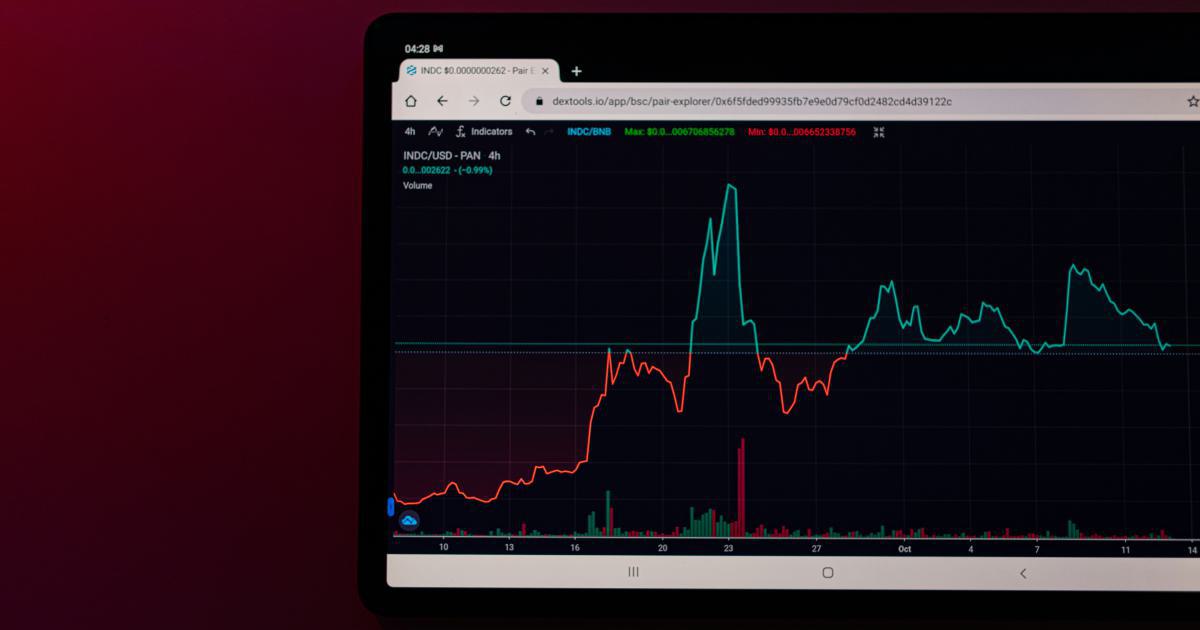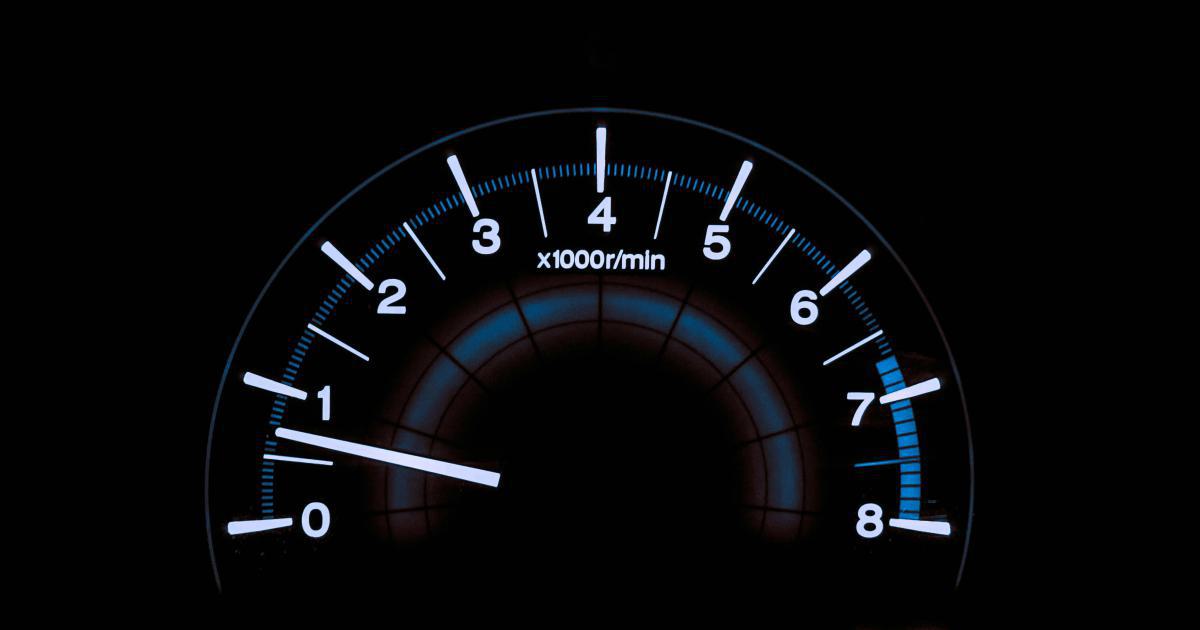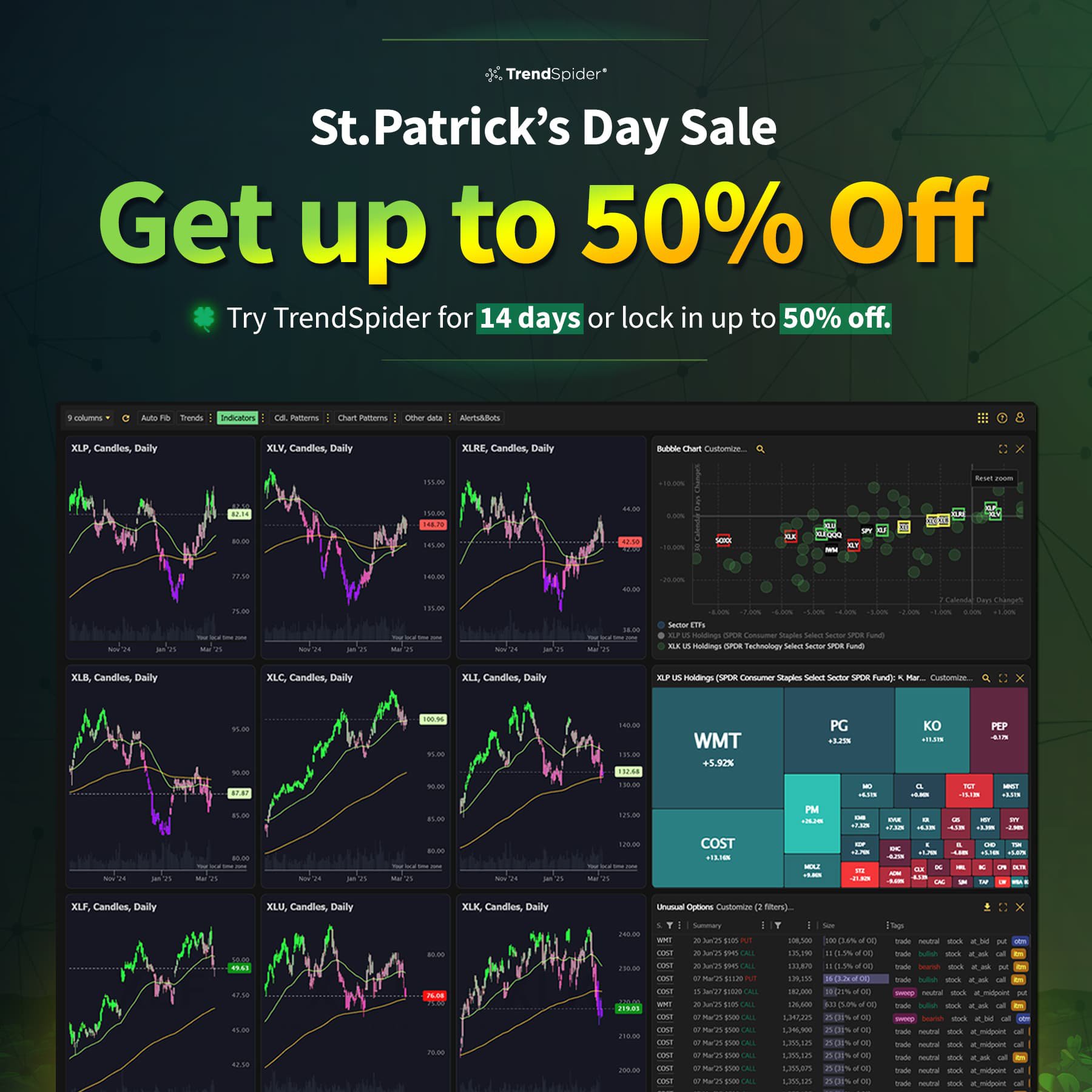What Are the Benefits of Automated Trade Execution?

Automated trade execution is revolutionizing the way markets operate. At its core, automated trade execution refers to the use of algorithms and computer systems to carry out trade orders based on predefined parameters. This technology enables rapid decision-making, reduces human error, and optimizes trading strategies to better respond to market fluctuations. In this article, we will explore the multifaceted benefits of automated trade execution, dissecting its role in transforming the trading landscape with a focus on efficiency, accuracy, and risk management. We will delve into real-world examples, expert recommendations, and the practical implementation of these systems to offer a comprehensive guide for professionals and enthusiasts alike.
Introduction to Automated Trade Execution
Automated trade execution is not just a modern convenience; it has become a critical component in the financial industry. By leveraging high-speed data processes and sophisticated algorithms, traders and institutions can capitalize on market movements with minimal delay. The capability to execute trades based on predetermined criteria – without intervention – means that markets can be monitored continuously with a high degree of precision. This system minimizes the risk of missing profitable opportunities due to human constraint and ensures that trading strategies are implemented uniformly.
Historically, trading was a manual process, relying heavily on human judgment. However, the development of advanced computing technology has led to a shift towards automation. Today, the integration of automated trade execution systems has become widespread in financial institutions, hedge funds, and even among individual traders. The ability to manage large volumes of trade in milliseconds sets automated trade execution apart from traditional methods.
In this context, automated trade execution offers several compelling benefits. Notably, it enhances market liquidity and efficiency by reducing the latency between market signals and order executions. In fast-moving markets where every millisecond counts, this reduction in delay can lead to significant competitive advantages. Moreover, the technology improves price discovery, ensuring transactions are reflective of the current market conditions. These elements contribute to a more robust and transparent trading environment.
Another crucial benefit is the elimination of human biases. Emotional decision-making is one of the significant pitfalls of manual trading. Automated systems adhere strictly to predetermined rules, thus removing subjective human influences and reducing the risk of error due to stress or hesitation. This objectivity not only improves consistency but also greatly facilitates backtesting and the evaluation of trading strategies over time.
Automation also plays a key role in risk management. By integrating stop-loss orders, take-profit targets, and other risk-mitigation techniques within the algorithm, traders can protect investments even when they are not actively monitoring the market. This built-in risk management becomes particularly essential during periods of high volatility.
Today, we will take an in-depth look at the various benefits associated with automated trade execution, understand the technology behind it, and discuss the practical implications for various market participants. The subsequent sections explore these advantages in detail, backed by real-world examples and actionable insights that demonstrate why automated trade execution is a game-changing innovation.
The Mechanics Behind Automated Trade Execution
How It Works
At a fundamental level, automated trade execution systems use algorithms – sets of computational instructions – to determine the best time to buy or sell financial instruments. These algorithms can analyze market data in real time, executing trades based on pre-established conditions such as price thresholds, volume levels, and other market indicators. This automated monitoring and execution process can operate continuously, 24/7, ensuring that no trading opportunity is overlooked.
Traders may choose to deploy simple rule-based systems or more sophisticated models that incorporate machine learning and artificial intelligence. These advanced models can adjust strategies dynamically based on incoming data, offering a more nuanced approach in volatile market conditions. The underlying technology also facilitates the management of complex strategies, such as pairs trading or statistical arbitrage, where decisions depend on analyzing multiple data streams simultaneously.
A significant advantage of these systems is the rapid access to market feeds. With the ability to process vast amounts of information in milliseconds, automated trade execution outpaces manual trading by a significant margin. Moreover, the systems can concurrently manage multiple accounts and execute strategies simultaneously, optimizing diversification and reducing risks associated with market concentration.
The benefits extend to reducing systemic inefficiencies. Manual processes are often prone to lag due to human reaction times and oversight. Automated systems ensure that once the market conditions meet the criteria, orders are executed instantly. This speed advantage is particularly crucial in high-frequency trading (HFT), where delays of even a few milliseconds can translate to lost opportunities or adverse price adjustments.
Image Placeholder: Understanding Algorithms

Integration with Modern Technology
The integration of automated trade execution with modern technology involves various components—from data acquisition systems, high-performance servers, to secure communication protocols. One key development has been the utilization of cloud computing, which offers scalable resources capable of handling peak trading loads. This ensures that even during periods of intense market activity, the automated systems continue to function optimally without performance bottlenecks.
Another technological advancement is the improvement in connectivity and low-latency networks. The reduction in transmission time from market data sources to trading platforms means that algorithms can respond to market changes more quickly than ever. Additionally, the integration of APIs (Application Programming Interfaces) facilitates seamless communication between different trading platforms and data providers. This ecosystem of interconnected systems lays the foundation for real-time, reliable automation.
Moreover, enhanced cybersecurity measures are vital to protect the integrity of automated trade execution systems. With cyber threats on the rise, robust encryption, multi-factor authentication, and regular system audits ensure that these trading algorithms function in a secure environment. Security protocols not only protect the trading infrastructure but also bolster trust among users who rely on these systems for their financial operations.
Overall, the fusion of high-speed computing, sophisticated algorithms, and robust technology infrastructure underpins the success of automated trade execution. As markets continue to evolve, these systems are likely to incorporate even more advanced technologies, offering enhanced functionalities and further driving the efficiency of trading operations.
Key Benefits of Automated Trade Execution
Automated trade execution provides several remarkable benefits that distinguish it from traditional manual trading methods. In this section, we highlight the key advantages that make it an indispensable element in modern financial markets.
Improved Efficiency and Speed
One of the most prominent benefits of automated trade execution is the dramatic increase in efficiency and speed. Algorithms can execute trades within milliseconds, a feat that no human trader can match. This speed enables market participants to capitalize on fleeting market opportunities, such as small price discrepancies, which would otherwise be lost during manual processing.
The efficiency gained through automation also extends to the processing of complex strategies that require rapid decision-making. Whether it is arbitrage or market making, the ability to process multiple orders simultaneously allows for a robust and dynamic trading strategy. As a result, companies that invest in high-frequency trading systems are able to operate with a level of precision unattainable by their competitors.
Furthermore, automated systems reduce the need for constant human oversight. Once configured, they operate autonomously, which not only frees up time for traders to focus on strategy development but also reduces operational costs. By eliminating manual intervention, automated trade execution systems help minimize the latency between decision-making and order fulfillment, ensuring that every trade is executed at the optimal moment.
Reduced Human Error and Emotional Interference
A significant drawback of manual trading is the inherent susceptibility to human error and emotional bias. Traders can be influenced by market noise, leading to decisions that are not entirely rational or aligned with long-term strategies. Automated systems, on the other hand, strictly adhere to predefined rules without succumbing to fear or greed. This objectivity ensures consistency in trade execution and enhances overall trading discipline.
By reducing human error, trade execution becomes more reliable. The consistency and precision of these systems play a crucial role in risk management. For example, automated stop-loss orders ensure that significant losses are avoided even during periods of sharp market decline. This methodical approach to trading allows for the systematic application of risk parameters that might be overlooked or mishandled in manual trading.
Moreover, automated trade execution minimizes errors such as duplicate orders or mispriced entries. The standardized processes inherent in these systems ensure each trade's parameters are followed exactly as programmed. As a result, the overall performance of a trading portfolio improves, as trades are executed more accurately and timely.
Cost Savings and Resource Optimization
Automation in trade execution not only improves performance but also significantly reduces costs. With automated systems handling the bulk of trade execution, the need for large trading teams and extensive manual oversight is diminished. This cost efficiency is particularly beneficial for institutional traders and banking operations where even a slight reduction in operational cost can lead to substantial savings over time.
Additionally, automated trade execution systems often lead to better resource allocation. Instead of dedicating significant financial and human resources to monitor market movements continuously, institutions can reallocate those resources to strategy development and risk analysis. This shift results in more efficient operations and the potential for higher returns on investment.
Technology plays a pivotal role in achieving these cost savings. The initial investment in an automated system may be significant, but the long-term benefits far outweigh the costs when considering the cumulative savings from reduced labor and error minimization. Furthermore, many modern platforms are built with scalability in mind, enabling businesses to expand their automated trading capabilities without proportional increases in overhead costs.
Enhanced Risk Management Capabilities
Risk management is a core aspect of modern trading, and automated trade execution systems offer advanced tools to manage these risks effectively. By integrating risk management functions directly into the execution algorithm, traders can automatically adjust their exposure based on current market conditions. This proactive approach can include strategies such as setting automatic stop-loss levels, implementing take-profit targets, or even triggering hedging actions when market volatility reaches a defined threshold.
In addition to these built-in safeguards, the continuous monitoring capability of automated systems provides an ongoing risk assessment that manual trading simply cannot match. The systems can analyze vast quantities of data in real time, forecasting potential scenarios and adjusting trading strategies accordingly. This dynamic risk management approach is especially useful during market turbulence, where rapid decision-making is essential to mitigate losses.
The reliability of these systems in controlling risk is well documented through various industry case studies. For instance, during unexpected market downturns, automated trading algorithms have consistently outperformed their manual counterparts by swiftly activating risk mitigation protocols. Such empirical evidence highlights the critical role of automated trade execution in safeguarding investments and sustaining market stability.
Increased Transparency and Market Accessibility
Automated trade execution promotes a higher level of transparency in trading activities. Every action taken by an algorithm is typically recorded, creating an auditable trail that can be analyzed for performance and compliance. This transparency is advantageous not only for internal evaluation but also for regulatory adherence, ensuring that trading activities remain within legal and ethical boundaries.
Furthermore, automated systems democratize access to sophisticated trading strategies. What was once available only to large financial institutions can now be employed by individual traders and small firms. The decrease in entry barriers has sparked innovation, leading to the creation of a competitive market landscape where efficiency and transparency drive success.
Increased market accessibility also results in a fairer trading environment. With automated systems leveling the playing field, trades are executed in a uniform and unbiased manner. This ensures that all market participants, regardless of size, have equal opportunities to respond to market signals, ultimately fostering a more robust and equitable trading industry.
Actionable Improvements for Traders
For traders planning to adopt these systems, it is crucial to understand that while automated trade execution offers many benefits, its effectiveness depends on meticulous planning and robust infrastructure. The integration of comprehensive market data, secure connections, and continuous system audits forms the backbone of a reliable automated trade execution strategy. Careful calibration of risk management parameters and extensive backtesting further ensure that the system operates as intended under various market conditions.
Traders are encouraged to start small, gradually increasing their exposure as confidence in the system grows. This incremental approach allows for adjustments based on real-world performance and minimizes the risk of large-scale financial errors during the initial implementation phase.
Image Placeholder: Efficiency in Action

Real-World Applications and Case Studies
Successful Implementations in Financial Markets
In the modern financial landscape, automated trade execution has been employed by various institutions with notable success. Many leading hedge funds and investment banks utilize these systems to manage portfolios that span multiple asset classes. One prime example is the utilization of high-frequency trading algorithms by major market players. These algorithms, operating on fractions of a second, have demonstrated their ability to generate significant profits by exploiting minor price inefficiencies that occur momentarily.
For instance, major financial institutions often implement automated systems to execute large volumes of trades simultaneously without impacting the market price. This capability, known as order slicing, is particularly useful in maintaining market stability while still achieving the desired portfolio diversification. In environments where every millisecond matters, these systems excel in ensuring that trades are not only executed but are done so in the most optimized way possible.
Another example can be found in the foreign exchange market, where automated systems analyze geopolitical events, economic data, and market sentiment in real-time. These systems can quickly adapt to volatile market conditions, ensuring that the exposure is managed effectively and that liquidity is maintained. The consistent application of these strategies has led to improved returns while simultaneously reducing overall risk exposure during periods of heightened market uncertainty.
In addition to institutional applications, there are also success stories emerging from the realm of retail trading. With the advent of user-friendly platforms that incorporate automated trade execution, individual traders now have access to state-of-the-art technology that was once reserved for large financial institutions. These retail platforms provide customizable algorithms that can be tailored to individual trading styles and risk tolerances. The democratization of this technology is fostering a new era of trading, where innovative strategies can be applied by a broader audience without the need for enormous capital investments.
Overcoming Traditional Trading Limitations
The implementation of automated trade execution has mitigated many limitations traditionally associated with manual trading. The elimination of delays, reduction of errors, and enhanced risk management capabilities have collectively contributed to safer and more efficient market operations. Institutions that have transitioned to automated systems report not only greater profitability but also enhanced operational stability. As these systems continue to evolve with technological advancements, the potential for further improvements in trade execution remains vast.
Moreover, the transparency provided by automation has improved regulatory compliance. Detailed logs and audit trails enable institutions to quickly reconcile discrepancies and ensure that their trading practices adhere to stringent industry standards. This level of precision and accountability reinforces the trust of investors and stakeholders alike, making automated trade execution a cornerstone of modern market operations.
Image Placeholder: Market Data Analysis

Best Practices for Implementing Automated Trade Execution
For firms considering the adoption of automated trade execution systems, careful planning and strategic implementation are critical for success. The transition from manual to automated trading involves several key best practices that ensure the reliability and efficiency of the system.
Comprehensive System Testing and Backtesting
One of the cornerstones of a successful implementation is thorough testing and backtesting. Before any live deployment, trading algorithms must undergo extensive simulation in historical market environments. Backtesting allows traders to evaluate the performance of their strategies over different market conditions and make necessary adjustments to optimize outcomes.
Moreover, continuous system testing is necessary to adapt to evolving market dynamics. Regular audits and stress tests help identify potential vulnerabilities that could compromise system performance. By incorporating real-time feedback and adjusting the algorithm accordingly, firms can significantly reduce the probability of system failure during live trading sessions.
Integration of Robust Data Feeds
Accurate data is the lifeblood of automated trade execution. Integrating high-quality, low-latency data feeds is essential for ensuring that the trading algorithms make decisions based on the most up-to-date market information. Reliable data sources not only enhance trading accuracy but also reduce latency, enabling the system to capitalize on market movements as they occur.
Firms must also invest in secure and redundant connections. In the event of network interruptions, backup systems or alternative data feeds can prevent significant losses. Furthermore, ensuring that data feeds are free of errors and discrepancies directly impacts the execution quality of the trading algorithm.
Risk Management and Security Protocols
Embedding robust risk management protocols into the automated system is non-negotiable. This includes setting stringent stop-loss parameters, establishing take-profit levels, and ensuring comprehensive compliance with regulatory standards. Traders should adopt a layered security approach that encompasses both technical and procedural safeguards. Regular updates, software patching, and cybersecurity audits fortify the system against unauthorized intrusions and operational downtime.
Additionally, it is advisable to implement fail-safe mechanisms that automatically revert to manual control in the event of unexpected system behavior. Such precautions ensure that market exposure remains controlled even when the automated system experiences unforeseen challenges.
Continuous Optimization and Learning
The financial market is dynamic, and the strategies that work today might need adjustments tomorrow. Continuous monitoring and optimization based on real-time performance data guarantee that the system remains competitive. Many firms now incorporate artificial intelligence and machine learning algorithms that allow the system to learn from past trades and improve over time.
This iterative process of refinement is essential for maintaining a technological edge. Regular performance reviews, coupled with industry best practices, can help traders remain at the forefront of market trends. The commitment to ongoing improvement is paramount in leveraging the full spectrum of benefits associated with automated trade execution.
Training and Support for Trading Teams
Even the most advanced automation systems require human oversight. Training sessions and continuous support for trading teams ensure that operators understand the nuances of automated trade execution. It is imperative that traders are adept at managing both the technological and strategic aspects of these systems. By investing in comprehensive training programs, firms ensure that their teams are well-equipped to handle any issues that may arise.
In conclusion, implementing automated trade execution is a multidimensional process that requires attention to detail at every stage. From rigorous backtesting to secure integration and continuous optimization, each step is crucial in building a resilient and high-performing system. Firms that adhere to these best practices not only enhance their trading efficiency but also set the stage for sustained profitability and market leadership.
Image Placeholder: System Optimization Cycle

Challenges, Future Trends, and Final Thoughts
Addressing Common Pitfalls
While the benefits of automated trade execution are abundant, it is important to acknowledge and address common pitfalls. System malfunctions, unexpected market conditions, and regulatory changes can challenge even the most sophisticated algorithms. Mitigating these risks involves maintaining robust contingency plans and ensuring regular system evaluations.
Traders must remain vigilant of over-optimization as well. Relying too heavily on past data without accommodating new market trends may result in systems that lack adaptability. A balanced approach that integrates historical performance with forward-looking analyses is essential for long-term success.
Future Trends in Automated Trade Execution
The future of automated trade execution promises even greater advancements. Innovations in artificial intelligence, deep learning, and big data analytics are poised to transform traditional trading paradigms. Future systems are expected to exhibit greater autonomy, capable of not only executing trades but also predicting market trends with increased accuracy.
Blockchain technology may also play a role in enhancing the transparency and security of trade execution. The decentralized and immutable nature of blockchain can provide an additional layer of trust, ensuring that trade records are resistant to tampering and fraud. As these technologies converge, the evolution of automated trade execution will likely yield systems that are more integrated, secure, and adaptive than ever before.
Moreover, regulatory environments will continue to evolve in response to the rapid pace of technological development. Industry stakeholders and regulatory bodies must collaborate to ensure that the benefits of automation are realized without compromising market fairness and integrity. This ongoing dialogue will help shape policies that facilitate innovation while protecting investors.
Final Thoughts
Automated trade execution stands as a transformative force in the modern trading landscape. By significantly enhancing efficiency, reducing human error, optimizing resource allocation, and bolstering risk management, this technology has reshaped market dynamics. The ability to execute trades with precision and speed provides substantial competitive advantages, making it a vital tool for financial institutions and individual traders alike.
As we’ve seen, the benefits are multifaceted – from improved operational efficiency and enhanced risk management to increased transparency and market accessibility. While challenges remain, the continuous evolution of technology promises to address these issues and further refine automated trade execution systems. Those who embrace these advancements are positioned to lead in an increasingly competitive market environment.
Successful adoption will rely on a combination of technological investment, robust risk management practices, continuous learning, and regulatory compliance. The real-world examples and case studies discussed in this article demonstrate that when executed properly, automated trade execution can deliver significant value across various market scenarios.
In summary, the journey towards effective automated trade execution is not without obstacles, but the benefits far outweigh the challenges. With careful planning, thorough testing, and an openness to innovation, the future of trading lies in harnessing the power of automation to drive improved economic outcomes and a more transparent market structure.
The evolution of trade execution is emblematic of the broader technological transformation in finance. As markets become increasingly data-driven and interconnected, automated systems will continue to be at the forefront of this revolution. Traders, institutions, and regulators must work together to realize the full potential of this technology, paving the way for a future where market efficiency and accessible trading are the norm.
Ultimately, automated trade execution is not just about faster and more accurate order execution—it is about rethinking the entire trading process for the better. By leveraging advanced algorithms, state-of-the-art data integration, and rigorous risk management, the modern trading ecosystem is poised to become more resilient, equitable, and efficient. As technology marches forward, so too does the promise of a future where financial transactions are executed seamlessly, safely, and with unparalleled precision.
Unlock Trading Potential with Automated Analysis
Tired of missing opportunities and making suboptimal trading decisions? TrendSpider's cutting-edge platform automates complex technical analysis, saving you time and reducing human error.
With multi-timeframe analysis, dynamic alerts, backtesting, and customizable charting, you'll gain a competitive edge in identifying trends and making informed trades across global markets.
Unleash the Power of Automated Trading Analysis
Are you struggling to keep up with the fast-paced trading world? TrendSpider empowers you with cutting-edge tools for optimal strategy execution.
Our automated technical analysis suite eliminates guesswork, backtests strategies, and delivers real-time alerts, saving you valuable time and effort.


